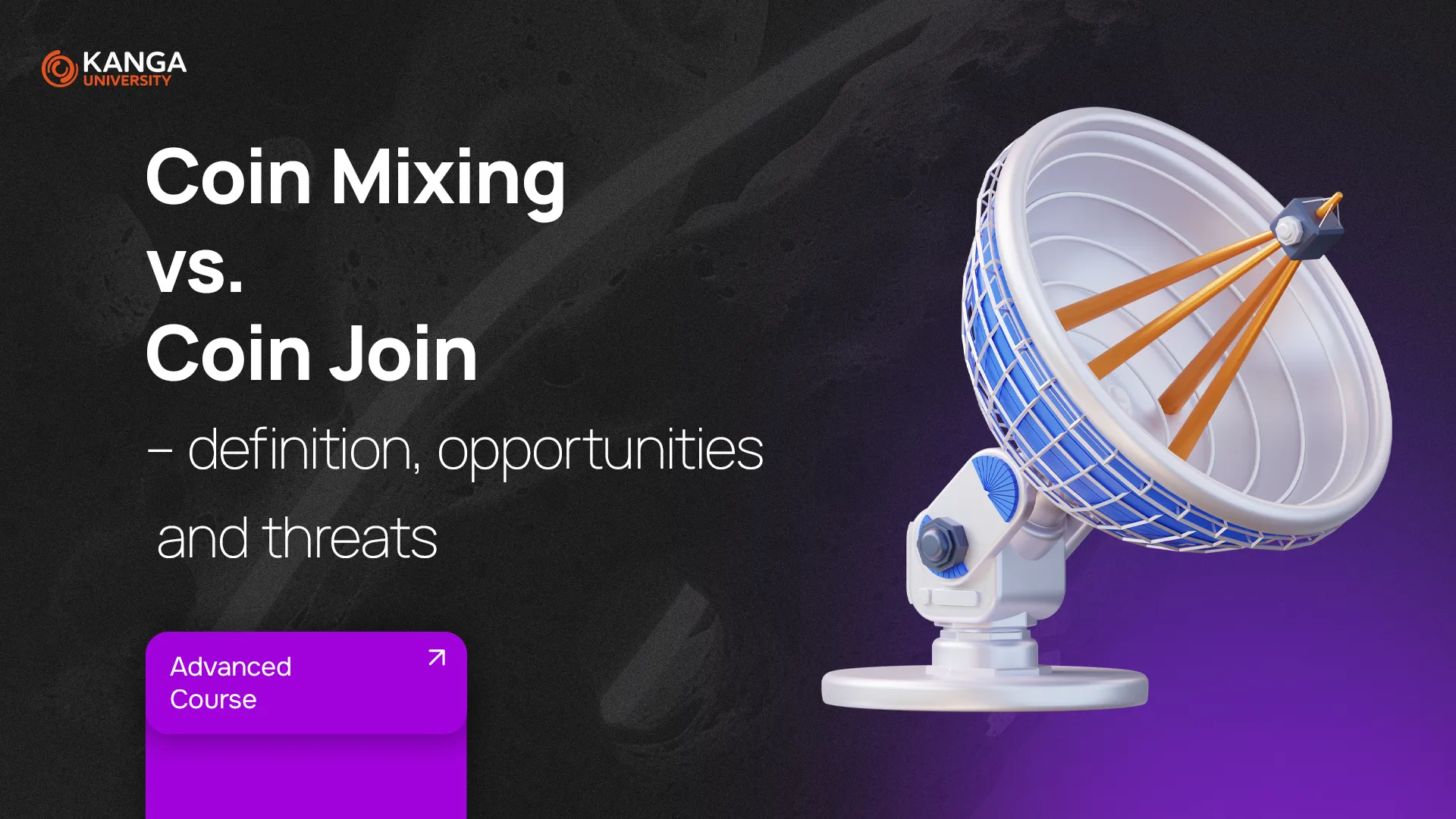
In the world of crypto, privacy and security are often at the heart of user concerns. That’s where tools like crypto mixers and the CoinJoin protocol come in. These technologies aim to make transactions harder to trace – which can be both a blessing and a curse. In this lesson, we’ll break down what these tools are, how they work, and what you should know before using them.
What is Coin Mixing?
As the name suggests, coin mixing is the process of “mixing” your cryptocurrencies with others to hide the trail between sender and receiver. Here’s how it works: you send your crypto to a service like Tornado Cash, which then mixes your coins with others and sends you the same value back – but from a different source.
This helps protect your privacy. For example, maybe you don’t want your partner or employer to know how you’re spending your crypto. A mixing service makes that possible.
But there’s a darker side too. Mixers have been used by hackers and cybercriminals to launder money. Tornado Cash, for instance, has been linked to over $7 billion worth of suspicious transactions.
What is CoinJoin?
CoinJoin is another way to increase privacy, especially for Bitcoin users. Unlike traditional mixers, CoinJoin doesn’t rely on a centralized service. Instead, it’s a protocol that allows multiple users to combine their transactions into one, making it almost impossible to trace the origin or destination of the funds.
Each user keeps control over their own money during the process. The transaction only goes through when everyone involved agrees and signs off. Once complete, the grouped transaction gets added to the blockchain, but no one can tell who sent what to whom.
How Do Crypto Mixers Work?
Crypto mixers use smart contracts to accept deposits from one address and send withdrawals to another. The funds are pooled together and mixed, so that by the time you withdraw, it’s nearly impossible to trace the source.
Since these systems are decentralized and permissionless, there’s no third-party oversight. This creates strong privacy – but also opens the door to misuse by bad actors.
Is Mixing Legal?
Mixing crypto isn’t illegal by default, but it can raise red flags. Some exchanges may block funds that have been mixed, especially if those services have been linked to illicit activities. It’s important to do your own research and understand the risks before using any privacy tool.
Pros and Cons
Benefits of crypto mixers:
-
Full transaction anonymity
-
No third-party monitoring
Risks:
-
Often used by criminals
-
Funds may be blocked by exchanges like Binance
-
Legality varies by country
-
Not all mixers are equally effective
-
Possibility of accidental mixing with illicit funds
Benefits of CoinJoin:
-
Improved privacy for Bitcoin users
-
No changes needed to the Bitcoin protocol
-
Fully decentralized and trustless
Risks:
-
Legal coins might get mixed with illicit ones
-
With enough metadata, identities can still be analyzed
-
Some services may flag mixed funds
Are Mixers the Only Way to Stay Private?
Not at all. Privacy coins like Monero and Zcash are designed for anonymous transactions. They use advanced tech like Zero-Knowledge Proofs (ZKPs) and stealth addresses to completely hide the flow of funds.
Monero mixes transaction signatures with decoys, while Zcash hides transaction details using zk-SNARKs – making it extremely difficult to track.
Final Thoughts
So what should you choose – a crypto mixer or CoinJoin?
It depends on your goals. If maximum anonymity is your priority, a mixer might do the trick. If you’re a Bitcoin user who values decentralization and control, CoinJoin could be a smarter option.
Just remember: privacy tools are powerful, but they come with responsibilities. Always research, understand the legal landscape, and make informed choices.